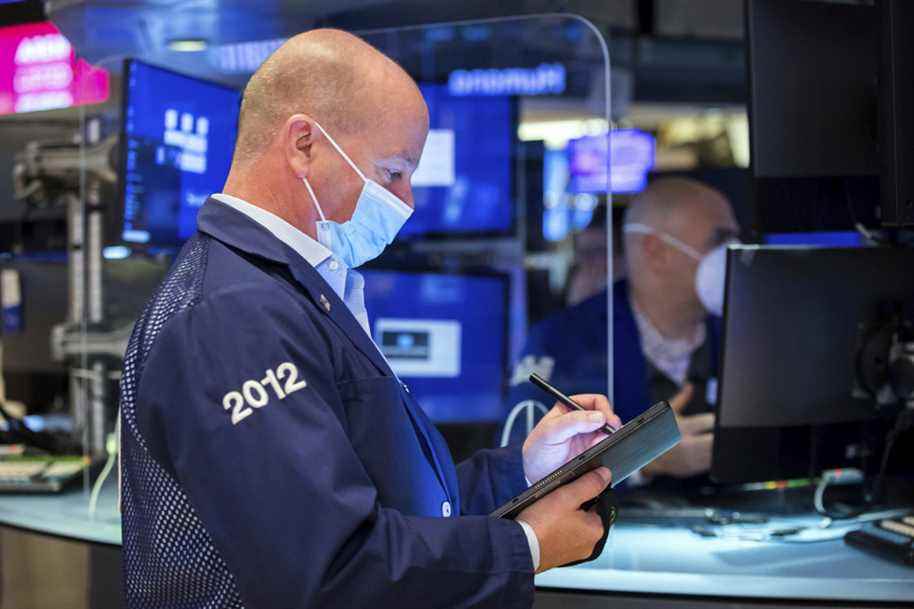(New York) The New York Stock Exchange closed sharply lower on Thursday, stunned by high US inflation which raised fears of an acceleration in interest rate hikes from the Central Bank (Fed).
Updated yesterday at 5:50 p.m.
According to final results, the indices finished at the lowest of the session, the Dow Jones losing 1.47% to 35,241.59 points. The tech-heavy NASDAQ fell 2.10% to 14,185.64 points. The S&P 500 dropped 1.81% to 4504.08 points.
Equities looked gray “as inflation is again higher than expected, further fueling expectations of a firm tightening of monetary policy from the Fed”, summed up analysts at Wells Fargo.
Inflation continued to accelerate in January in the United States to reach 7.5% over one year (+0.6% over the month), its fastest pace for nearly 40 years and more than expected, announced the US Administration on Thursday.
We have to go back to February 1982 to find such high annual inflation, according to the consumer price index (CPI) published Thursday by the Labor Department. Year on year, energy prices rose 27%, and food prices rose 7%.
Faced with this rise in prices and fears that the American Central Bank (Fed) will not be more strict in its monetary policy in order to curb inflation, bond yields on 10-year Treasury bills crossed the 2 mark on Thursday. %, for the first time since July 2019. They climbed to 2.04%.
Yields on two-year bills, reflecting investor fears of a faster Fed rate hike, jumped 18% to 1.61%, flattening the curve between medium and long-term rates.
“The inflation numbers came out stronger than expected and that’s negative for the market,” said Peter Cardillo of Spartan Capital.
“This means the Fed could be more aggressive and if it has signs of wages rising further in the next jobs report on March 4, it could raise rates by half a percentage point (0.50 %) all at once,” noted the analyst.
The next Federal Reserve Monetary Committee meeting is scheduled for March 15-16.
Unexpected rate hike?
But some analysts now fear that the Fed could raise rates on the spur of the moment without waiting for that official meeting date, as one of the members of the Central Bank’s Monetary Committee, James Bullard, suggested on Thursday.
The eleven S&P sectors all ended in the red, starting with sectors sensitive to the rise in the cost of money, such as the real estate sector (-2.86%) or that of information technologies (-2 .75%).
Even groups that shared good news through their quarterly results were punished.
First-searched Uber’s stock eventually plunged 6.07% to $37.75 despite the group reporting net profit of $892 million in the fourth quarter, a sign that profitability is no longer a chimera for the car rental giant with drivers (VTC).
Disney saved the day (+3.41% to 152.25%) after seeing its turnover increase by 34% over one year, to 21.8 billion dollars in the first quarter of its financial year. Profit was $1.1 billion.
Its online video service, Disney+, gained 11.7 million subscribers in one quarter, reaching 129.8 million, significantly more than the 124.6 million anticipated.
Twitter fell 2.01% to $37.07 after seeing user numbers grow in the fourth quarter of 2021, but revenue came in below Wall Street expectations. Its board of directors has also approved a new share buyback program for $ 4 billion, which supported the title at the start of the session.
Semiconductor and microprocessor makers have been particularly hard hit as Intel boss Pat Gelsinger warned that semiconductor components will continue to be hard to source in 2023.
Thus the titles of Intel (-2.10%), Nvidia (-3.30%) or even AMD (-5.33%) fell.
Toronto Stock Exchange also down
The Toronto Stock Exchange closed lower on Thursday after the release of data showing stronger than expected inflation in the United States, which raised fears among investors that the Federal Reserve will raise interest rates more than expected. dynamic next month.
An afternoon divestment capped a “very volatile” session for the Toronto Floor Composite Index, said Mike Archibald, vice president and portfolio manager at AGF Investments.
The Toronto Stock Exchange’s S&P/TSX Composite Index lost 72.47 points to end the session with 21,531.72 points. He had started the day on a negative note following the release of data from the US Department of Labor, which showed inflation jumped 7.5% last month compared to the same period in 2021, inflation underlying (excluding food and fuel) reaching 6.0%.
Both numbers were higher than analysts had expected and sent U.S. stock indexes plummeting. As Canada’s main stock index rallied late in the morning — in part due to strong quarterly results from a number of Canadian companies — the S&P/TSX once again entered sell territory in the afternoon after St. Louis Fed President James Bullard said he favored a half-percentage-point hike in the U.S. central bank’s benchmark rate.
Central banks in the United States and Canada are expected to raise rates this year to counter inflation, but a March 50 basis point hike by the Fed would be higher than most analysts have so far expected. This prospect made traders nervous and sent stocks tumbling.
“The real debate is to what extent the Fed will increase its dynamism, or its aggressiveness”, explained Mr. Archibald. “That is really going to dictate how risky assets are going to trade over the next few weeks. »
In the currency market, the Canadian dollar traded at an average rate of 78.85 US cents, down from 78.86 US cents the previous day.
The Canadian Press
